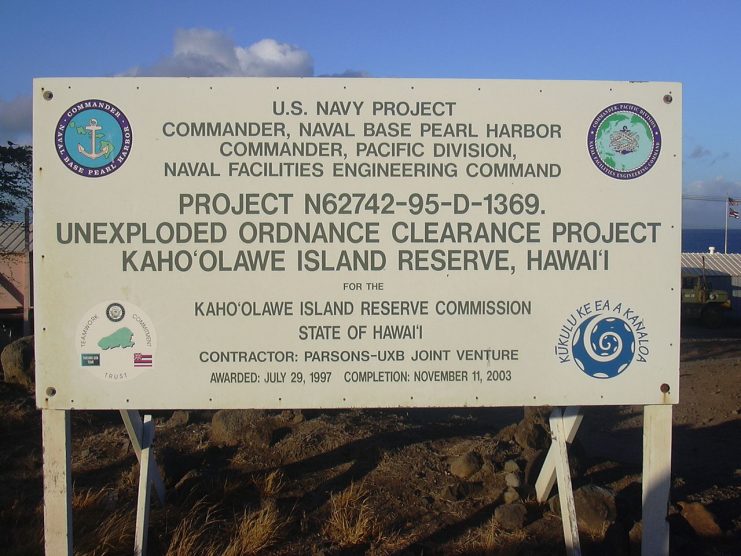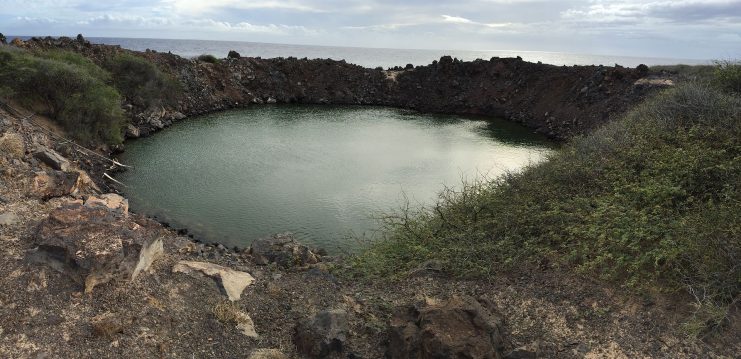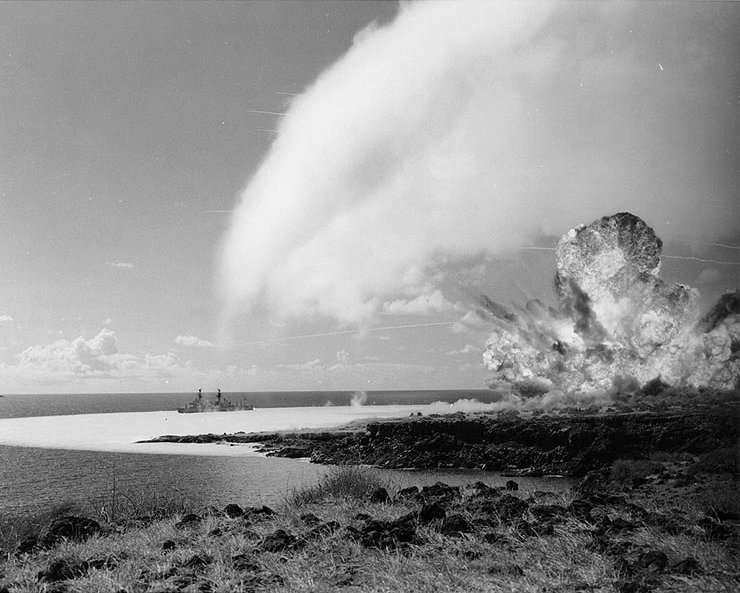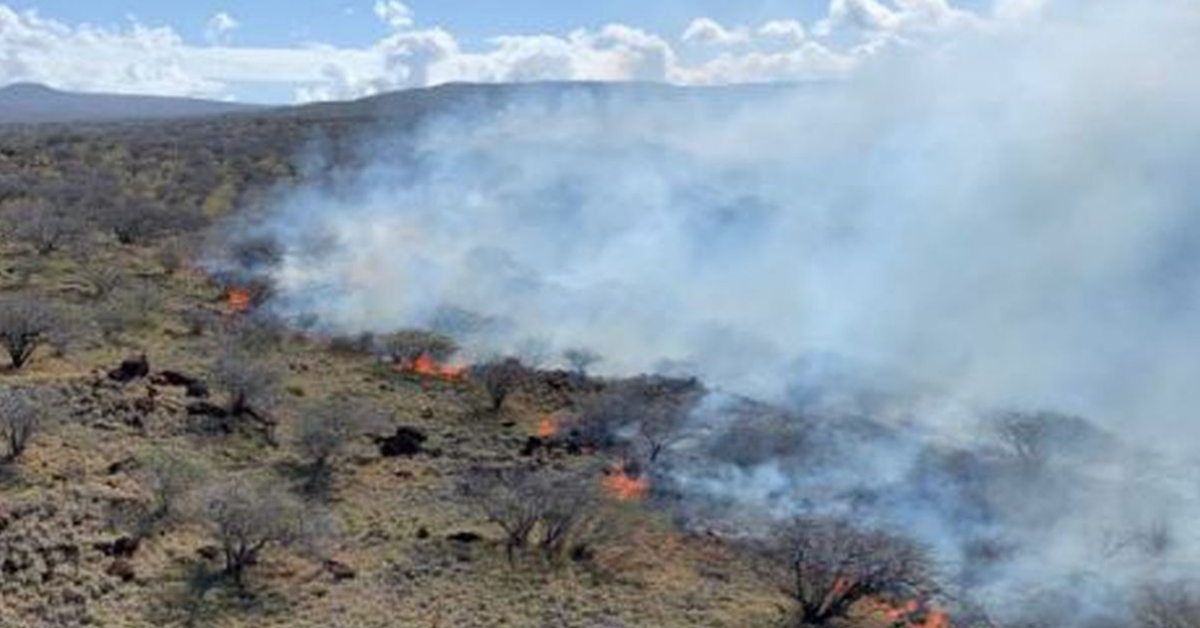While Kahoolawe Island Reserve Base Camp has emerged reasonably unscathed from a rampant brush fire on the island, at least thirty per cent of the area (4 square miles) has been reported lost to the flames.
Firefighters from the Maui Fire Department had to hold back from a number of locations due to concerns over unexploded ordnance known to remain on the island.
Kahoolawe has been uninhabited for decades since the second world war when it began to be used for live fire military bombing practice.

It was handed back to civil control in 1994 from the US Navy, who were contracted to clean up the island. While estimates put the area cleared of unexploded munitions at 65%, just 10% has been cleared to a depth of four feet.
In 1941, December 7th, the US declared martial law throughout the islands of Hawaii following the Japanese raid on Pearl Harbour.
Kahoolawe island was used as a training base for US Marines heading West into the Pacific theatre. Criteria for success was deemed to be the level of accuracy achieved by US Navy gunners with regard to the suppression or destruction of enemy assets that would frustrate landing efforts.

Many of the Allied forces targets included the Gilbert and Marshall Islands, New Guinea and Peleliu and so Kahoolawe became central to the US effort.
Thousands of military personnel were trained throughout the war and for five decades afterwards. The island sprouted mock-ups of airfields, vehicle convoys and military camps, radar installations and surface-to-air missile sites.
Perhaps the most controversial military activity was the US Navy Operation, Sailor Hat, which was devised to test the blast resistance of its fleet.
Three tests were made using 500 tons of TNT. Target ship the USS Atlanta was damaged by the blast but remained afloat.

The island however, received a new geographical feature, a crater christened ‘Sailor Mans Cap’, which was suspected of splitting the local geology thereby losing valuable groundwater to the ocean.
Through the 1970s, protesters began a series of occupations of the island in attempts to stop the use of live-fire testing and practice bombing raids.
Two men, Ritte and Sawyer, stayed on Kahoolawe for thirty-five days, avoiding detection by troops sent to find them. On more than one occasion bombing was allowed to continue while the protesters were still on site.
‘…the ground was shaking, and bombs were dropping,’ said Ritte,’ the senators gave the OK — it’s all clear start bombing. We could’ve been blown up.’
Two more activists from the Protect Kahoolawe Ohana group, George Helm and Kimo Mitchell were lost at sea in 1976 on their way home from an occupation.
By 1990, following petitions, a court case and a sustained media campaign President George HW Bush gave the order to end the use of Kahoolawe as a bombing range.
In 1991 the legislation was in place for the transition back to civil control contingent upon the satisfactory rehabilitation of the island.
The US Navy retained control up until November 2003, with ordnance clearing operations starting in 1998.
The work was never completely finished, with some remote and difficult to access areas remaining untouched.
The Kahoolawe Island Reserve Commission instead accepted that a residual risk remains and have since developed a management plan to protect reserve users, visitors and volunteers.
Some 900 million pounds of unexploded ordnance, 28,600 items, has been cleared from Kahoolawe, which has cost upwards of $400 million.
Mike Nahoopii of the Island Reserve Commission has conceded that Kahoolawe will likely never be completely clear of unexploded ordnance, saying that, “Once you start using a piece of property for military bombing, you’re never going to remove every single bomb.”
The Commission runs twenty-six buildings on the South side of Kahoolawe, all of which were spared by the fire.
‘Greyhound’ The New Tom Hanks Movie, Check Out The Trailer
The facility can house up to fifty people while work to rehabilitate the island as a nature reserve continues.
